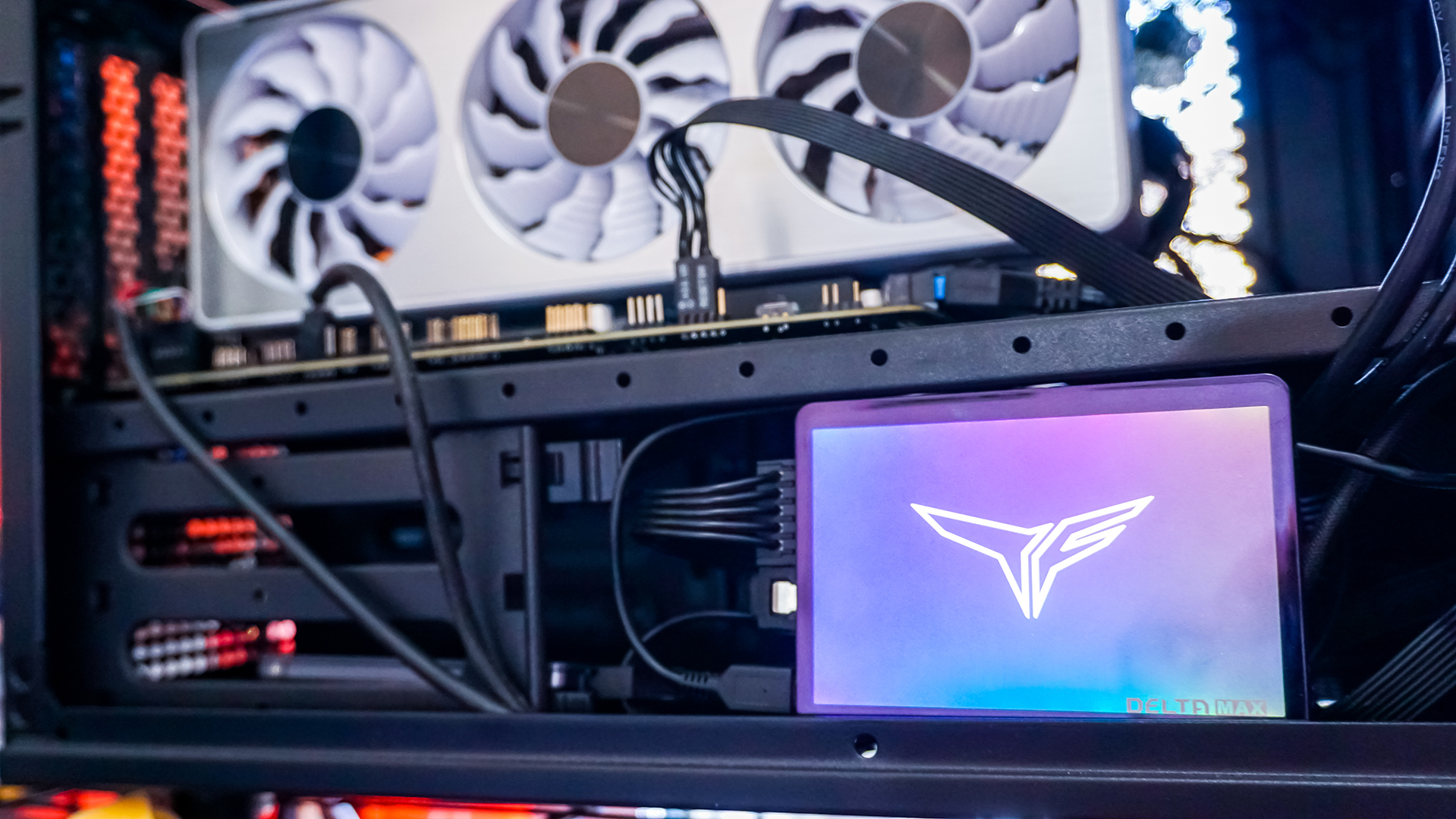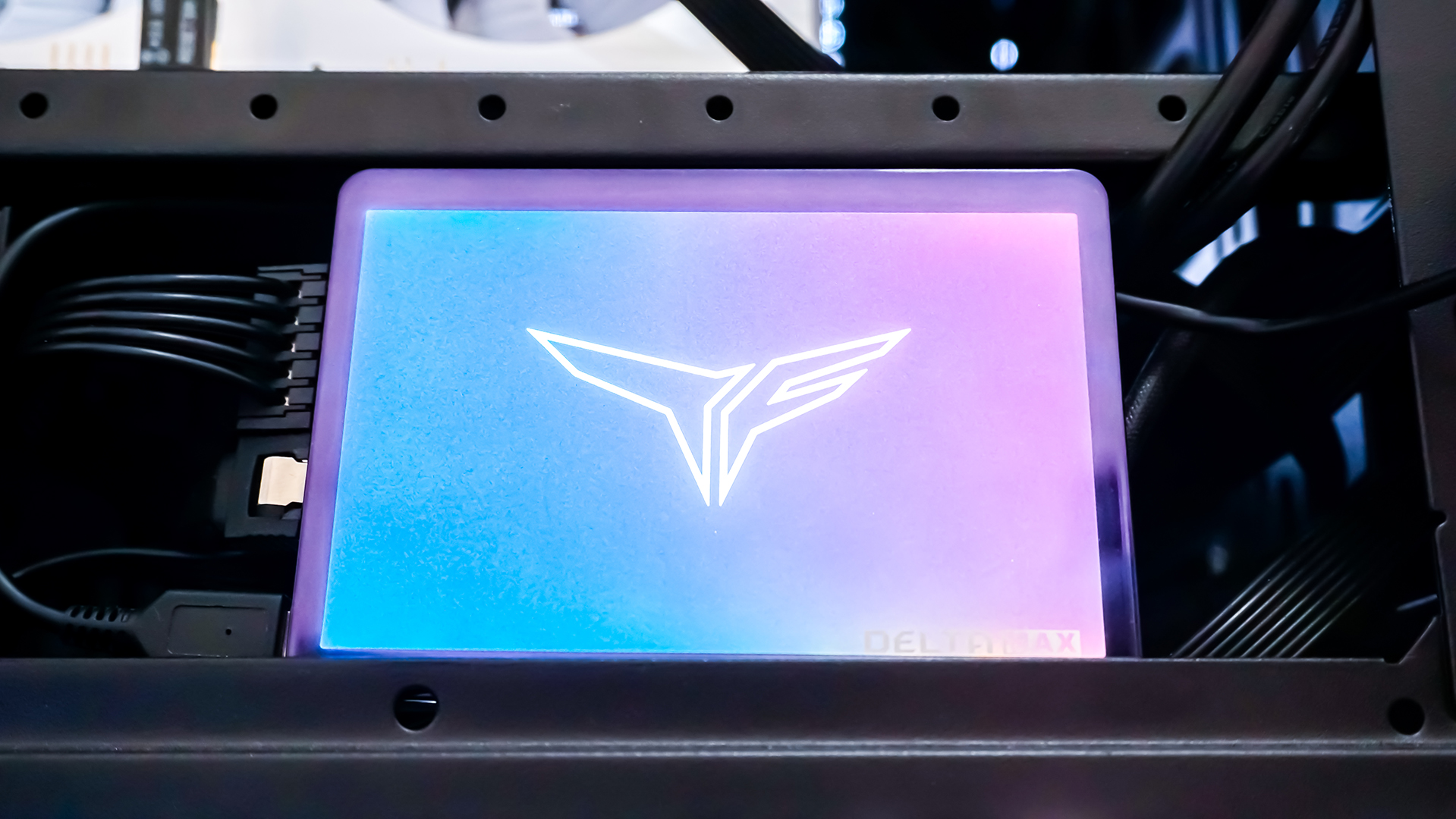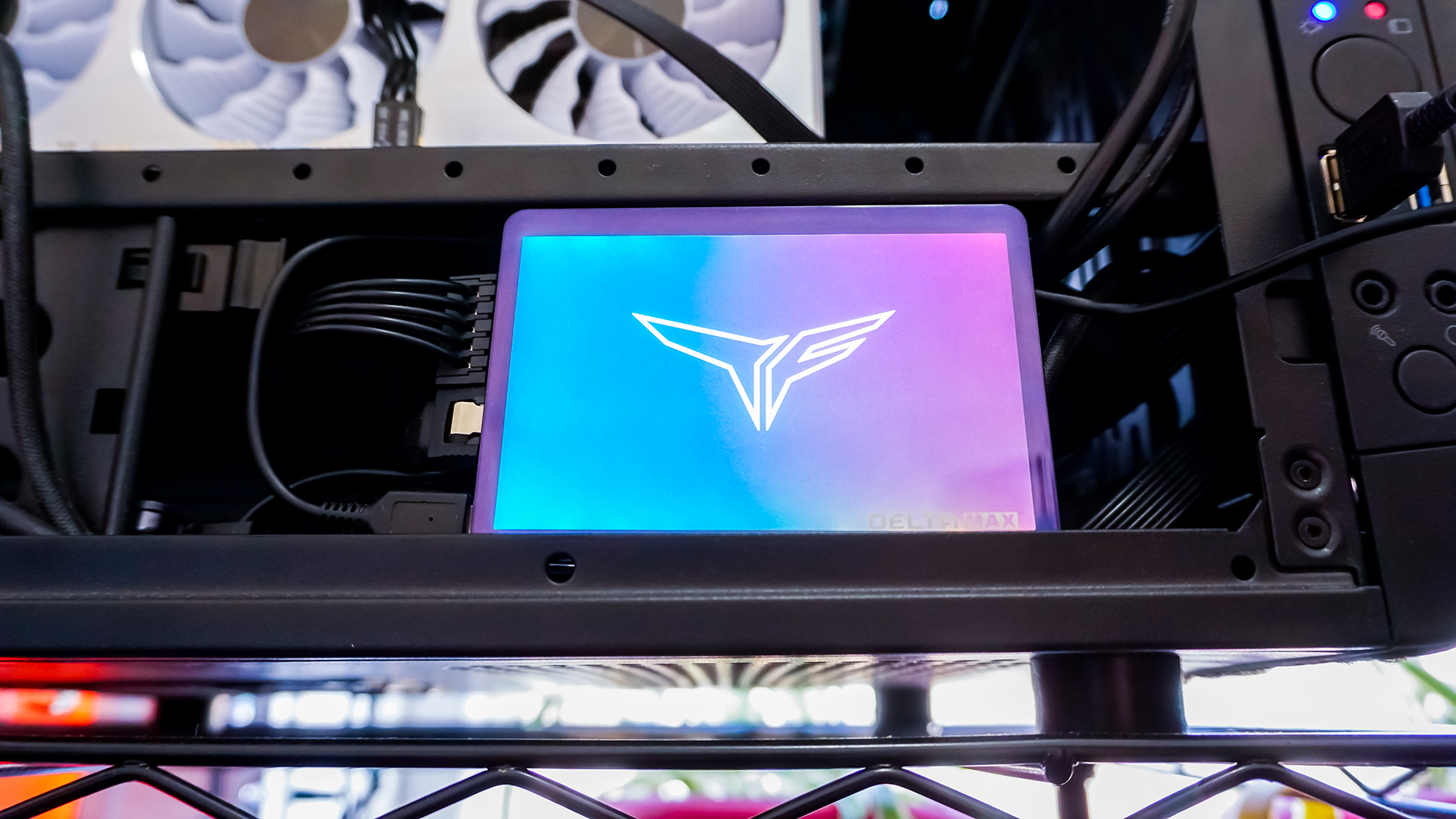TechRadar Verdict
There’s only so much you can get out of a SATA SSD, and the T-Force Delta Max actually delivers it with RGB lighting as the cherry on top. But, aesthetics aside, it’s value falls flat next to even modest PCIe NVMe drives.
Pros
- +
Fun RGB
- +
Decent value
- +
Speedy
Cons
- -
SATA speed limit
- -
Outclassed by PCIe
Why you can trust TechRadar
This is the system we used to test the Team T-Force Delta Max
CPU: AMD Ryzen 5 3600X
CPU Cooler: AMD Wraith Spire
RAM: 32GB T-Force Vulcan Z CL18 @3,600MHz
Motherboard: MSI B550 Pro VDH Wi-Fi
Graphics card: EVGA GeForce RTX 2070 XC Gaming
OS SSD: Samsung 980 Pro @ 500GB
Power Supply: Thermaltake Toughpower GF1 750W
Case: ThermalTake Core V21
The Team T-Force Delta Max is a SATA SSD joins the expansive ranks of fellow SATA SSDs with an RGB twist. At a price of $120 (about £90, AU$155) for a 1TB drive, it’s not making a name for itself in terms of value, but it’s certainly not the most expensive drive out there. It even manages to land near the $129 Samsung 870 QVO.
What Team T-Force is offering with the Delta Max at this price is what helps it stand out. For one, the Delta Max is an SSD with TLC NAND rather than the QLC found in many budget drives. This TLC NAND tends to offer better endurance than competing QLC-based storage. That said, the 1TB T-Force Delta Max is offering an endurance rating of 360TBW (terabytes written), which isn’t higher than the QLC-based Samsung 870 QVO, though it is higher than the Intel 660p PCIe SSD.
Here’s how the Team T-Force Delta Max performed in our suite of benchmark tests:
CrystalDiskMark Sequential: 563MB/s (read); 526.6MB/s (write)
CrystalDiskMark Random Q32: 370.83MB/s (read); 368MB/s (write)
10GB file transfer: 16.8 seconds
10GB folder transfer: 15.285 seconds
PCMark10 SSD: 950 points
The T-Force Delta Max also has RGB, which usually comes with a premium, so it's a pleasure to see it remain reasonably priced compared to similar SATA SSDs. The RGB layer on the top of the Delta Max adds a little thickness, but it essentially adds a cluster of LEDs that create a glowing rectangle. The RGBs take power either from a USB cable or a 5V 3-pin aRGB header, both of which can connect to the drive’s micro USB port. The drive will display a color swirl by default, but connecting to an aRGB header allows for syncing with a wide variety of motherboard RGB software. Even with the lighting off, the drive has a rather pleasing mirror finish.
The RGB lights are part of this drive’s gamer aesthetic but it’s nice to see that performance doesn’t take a back seat to style. Recent SATA drives push the limits of what the interface can even allow, and with sequential read speeds of 563MB/s, the Team T-Force Delta Max edges out the Samsung 860 Pro. Write speeds are a little slower, but the Delta Max makes up for that with random read and write speeds (the drive’s real worth in regular workloads) that beat the 860 Pro by close to 20MB/s and the 860 Evo by more than 100MB/s.

The problem is that we’re not all limited to SATA drives. PCIe drives have come down in price considerably, enough to compete with SATA drives, and they almost unerringly offer higher speeds across the board. The Corsair MP400 is one of the stronger value PCIe SSDs, even tying the Delta Max for cost-per-gigabyte, and decimates Team’s offering in speed tests. It’s easily over four times as fast and more often closer to six times as fast. Never mind that PCIe 4.0 SSDs are also coming down in price with still higher speeds.
Most of us probably have more SATA ports available inside our computers than we do PCIe NVMe slots, so there’s still good enough reason to pick up a SATA drive. We wouldn’t recommend the Delta Max over the Corsair MP400 or SK Hynix Gold P31 if you have the choice between PCIe and SATA SSDs. But, if you’re looking specifically for SATA, the Delta Max offers strong performance at a fair enough price and does it in style.

Buy it if…
You’re all about that RGB
Sometimes having RGB alone is enough reason to buy one gadget over another. When building a computer with aesthetics in mind, having choice over lighting can be key, and the T-Force Delta Max can sync up with your computer’s lighting scheme using an ARGB header.
Your drive needs to be SATA
If SATA is your only option, you can do worse than this drive. It’s about as fast as we’ve seen SATA drives go, and it’s not overly expensive for what’s on offer.
You’re building a budget gaming PC
If your gaming rig needs some extra flair without RGB lights adding too much to the price, the Delta Max doesn’t suffer from a massive price hike for its lighting effects.
Don’t buy it if…
You’ve got an empty PCIe NVMe slot
Even budget PCIe NVMe SSDs are offering considerably more speed than the Delta Max can muster, and some even cost less per gigabyte.
You’re maximizing value
If you want to get the most for your money, there are still cheaper SATA SSDs that skip out on the RGB lighting effects while offering reasonable speeds. Of course, a budget NVMe drive would go even further.
You can wait
If you’ve got plenty of empty space in your computer already, there’s not much sense in rushing out to buy a SATA SSD today. Faster drives keep coming, and we keep seeing even more affordable PCIe-based drives launch all the time.
Over the last several years, Mark has been tasked as a writer, an editor, and a manager, interacting with published content from all angles. He is intimately familiar with the editorial process from the inception of an article idea, through the iterative process, past publishing, and down the road into performance analysis.

